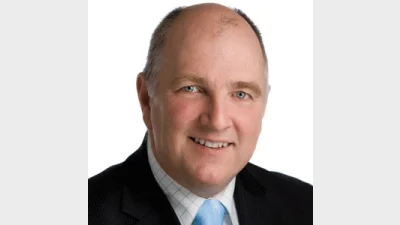A guide to risk insurance and client signatures



We are all guilty of ticking a box saying we have read the offer terms and conditions when in fact we have not. Col Fullagar lists the contents of some of the more common statements in risk insurance that require a client signature, issues that can arise and how to mitigate them.
The risk insurance recommendation had been made and accepted, the application had been completed – all that remained was the signing of the declaration. The conversation went something like this:
“That’s great Jim, now I need you to sign and date the declaration here; it’s just confirming you disclosed everything within the application, and then if you could sign these medical authorities, which give the underwriters permission to write to your doctor…now we are all done…congratulations you have just joined the French Foreign Legion!!!”
SCREEETCH …let’s just wind that tape back …
A prudent concern held by advisers is that, through no fault of their own, something unexpected may turn an appropriate recommendation sour:
- The client may not provide all relevant information during the fact-find;
- The client’s circumstances may unexpectedly change; or
- The recommended product may have unknown contractual nuances that affect a claim.
These are valid concerns which have long been recognised, thus enabling the adviser to implement protective procedures such as making sure the fact-find process is comprehensive, having regular client reviews and ensuring recommended products are thoroughly analysed.
The greater risk, however, does not lie with the known. It lies with the unknown because it is easier to fall foul of the unexpected and precautions are less likely to have been taken.
Imagine for a moment if the above opening scenario had been correct: the adviser briefed the client about what they were signing, the client relied upon the adviser’s summation – and subsequently ended up on a plane to Algeria.
Bring on the lawyers!
If an adviser is directing a client to sign something, clearly the safest way forward is to insist the client carefully reads what is being signed. Further, the adviser should be ready to respond to any questions that arise.
Whilst this may be safe, it is not necessarily practical.
Fortunately, there is an alternative.
Step one is for the adviser to identify the various statements the client may need to sign during the initial advice, underwriting and claims process.
Step two is for the adviser to be aware of the authorities, confirmations and commitments contained in these statements.
Step three is for the adviser to explain those matters that are material to the client in a clear, concise and consistent manner.
Finally, step four is for the adviser to provide the client with assistance and advice if concern is expressed by the client about what they are being asked to sign.
Enter yet another ‘adviser value-add’ within the advice process!
Application declaration
The application declaration will generally include confirmation that the product disclosure statement (PDS) has been read and understood.
Not only is confirmation of reading and comprehension sought, but it is to have occurred prior to the application for insurance being made.
The average PDS is upwards of 60 pages long and all parties, the client, adviser and insurer, openly acknowledge that it is rarely read and even more rarely understood; thus clearly the client is being asked to sign an incorrect statement and to make it worse, the adviser will probably know it is incorrect.
If the client is left to form their own view as to how the policy works and this expectation is not met, the insurer is the least likely to hold itself accountable by confessing its documents are not designed to make the best-selling list.
Neither is the client likely to hold up their hand and accept responsibility, which of course leaves one person standing.
To avoid any associated problems, responsibility may appropriately rest with the adviser, who needs to have a thorough knowledge of the contents of the PDSs so that the four steps set out above can be implemented.
Duty of disclosure
The declaration would also include an acknowledgement that the duty of disclosure has been read and understood and that acceptance or otherwise of the applied-for insurance is based on the answers given to questions contained in the application.
The importance of proper disclosure by the client is hard to over-stress and this statement within the Declaration provides the adviser with an ideal opportunity to make the point.
See Money Management (12 October) for further discussion about the duty of disclosure.
Cover commencement date
The client will also have to acknowledge that insurance cover will not be effective until written notification of the policy is received and the duty of disclosure continues until then.
Many a dispute has arisen because the client was not clear about when the policy started and the duty of disclosure ended.
A belief that disclosure is only required until the application is submitted or underwriting acceptance occurs can again lead to client expectations and reality taking a dangerously divergent path.
The ongoing duty of disclosure also highlights the problems arising if there are delays in the application process.
Contrary to popular opinion, these delays do not need to be excessive – for example, a client may suggest thinking about things over the weekend.
Again, the reference to the ongoing duty of disclosure provides the adviser with an ideal leverage point.
Replacement cover
If applied-for cover is replacing existing cover, the existing cover must be cancelled, otherwise the applied-for cover will not be effective.
In regards to replacement policies, the adviser can ensure three things occur: the client satisfies their duty of disclosure in respect of the new policy, the existing insurance is not cancelled until the new policy is received and the premium deduction authorities for the existing insurance is cancelled.
Privacy statement
Declarations would generally include confirmation the insurer’s privacy statement has been read and understood.
To the extent the declaration includes this confirmation, the contents of the insurer’s privacy statement warrant attention.
Within the Statement there will generally be:
- Confirmation of the purposes for which personal and sensitive information will be used – for example, to assess the application for insurance and subsequently administer the policy;
- Examples of parties to whom information can be disclosed; agents, contractors, business partners and service providers of the insurer, and also to the adviser;
- Confirmation that information can only be disclosed if it is “relevant to a valid purpose”;
- Confirmation that access to personal information is in most cases available to the client; however, a charge may be made for providing copies; and
- Confirmation that personal, but not sensitive, information can be provided to other parts of the organisation so they can notify the client about other products and services they make available – an opt-out facility is generally available.
The insurance application process can require the disclosure or obtaining of very sensitive information about the client.
Assurances of how it will be treated and to whom it can be made known are important to the client’s peace of mind as mistakes can have devastating, long-term consequences.
Also, if the client wishes to avoid being “spammed” by other areas of the insurer organisation, which in itself can give rise to concerns about how far client details have been disseminated, knowing how to opt-out can give the necessary comfort.
Medical authority
The application for insurance will also likely contain medical authorities that require signature.
These authorise a ‘doctor’ to release details of the client’s medical history to the insurer or any organisation appointed by the insurer to collect this information.
The authority can be directed towards one or more of:
- The current or previous treating physician;
- A hospital;
- A specialist; or
- A testing laboratory.
The authority has, on occasions, even been used to obtain information from parties the insurers do not consider to be medical practitioners, for example physiotherapists, naturopaths, etc.
The authority has no ‘used by date’ and thus, in theory, it could be used not only at the time of application but also if a claim was made.
If the client is in any way concerned about signing such an open authority, the adviser can approach the insurer for confirmation that:
- The authority will only be used to obtain underwriting information;
- The client will be advised in advance of to whom and why requests for medical information is being sent; and
- The client will be able to obtain copies of any reports and surgery notes received as and when they are received.
An unreasonably negative response may flag to both the adviser and the client that the insurer is not the best fit for that client so that an alternate recommendation can be made.
Medicare authority
It is common for Medicare and Pharmaceutical Benefit Scheme authorities to be obtained when a claim is submitted.
These enable the insurer to obtain details of medical consultations and medication dating back to the start date designated in the authority itself, which can be as early as 1986.
The further back records are requested, the greater the time it takes to obtain the information.
Also, a client may suspect the insurer of ‘going fishing’ for a claim denial reason if there is no apparent reason for a date being designated that bears no relevance to the date of policy inception or the event giving rise to the claim.
Prudent enquiries with the insurer by the adviser can again help to alleviate concerns.
Attached to the reports sent to the insurer may be a covering letter stating the report “should not be provided to any third party.” Insurers have sometimes used this statement as justification for not providing a copy to the insured.
Confirmation that this reliance is erroneous can be obtained from Medicare, who point out correctly the insured has provided the authority to the insurer and thus is at liberty to be provided with a copy of the report itself.
Claim declaration
Insurers not only need to obtain information at the time of application; it can also be required when a claim is lodged, which once again gives rise to the need for an authority form to be completed.
A claim authority might authorise the insurer:
- To provide personal and possibly sensitive information to medically related parties such as a physician, hospital or other health care providers, so the insurer can in turn be provided with medical histories, referral letters, reports, test results and clinical notes;
- To provide personal and possibly sensitive information to non-medically related parties such as any claims assessor (not limited to that of the insurer), private investigator, credit reference service, legal or accounting firm, auditor, consultant (the type of which is not necessarily clarified) or reinsurer;
- To obtain information from a wide range of parties such as another insurer, a government body – for example, workers’ compensation, Veteran Affairs, etc, – the insured’s adviser, medical professionals, claims reference providers, legal or accounting firms and past or present employers.
Whilst the insured may be comfortable about information being provided to and obtained from medically related parties, they may be less comfortable about information being made available to a more public arena such as legal and accounting firms and particularly, present and past employers – a short-term medical issue such as a minor reactionary depression can cause long-term work-related problems if it became widely known.
Pre-advice of potentially embarrassing enquiries can enable all parties to put in place appropriate safeguards.
The collaboration of claims assessors from different insurers may lead to unnecessary delays if one insurer decides to await information being obtained by another insurer, albeit they would not have obtained it otherwise.
If the insured and the adviser are unaware of this collaboration, the ability to question issues of relevance is lost.
The claims management process is not always held up as a positive example of the value-add of insurers, a perception that can be fostered by a lack of open communication and accountability on the part of the insurer in areas such as those above.
There pervades an attitude with some insurers that the claims assessment process must be cloaked in secrecy – information is requested without reference or reason being given, updates are not provided, only final decisions.
Where this attitude exists, there might be merit in the adviser recommending to the insured that “blank cheque authorities” not be signed, but that any authority given is made contingent on insurer accountabilities similar to those previous mentioned:
- Advice in advance of information being requested;
- Explanations as to why the information is required; and
- An offer to provide a copy of the information after it is obtained.
A negative response from the insurer is unfortunately too late to influence the current policy being in place; however, it may well be noted by the adviser as relevant for future recommendations.
Summary
The mandatory tasks associated with the compliance process are already onerous, and to add to this by way of insisting the client reads and understands all documents and declarations may not be practical.
The discussed way forward of responsibility falling to the adviser to know and explain may be the preferred alternative.
This responsibility must be taken seriously, however – as failure to deliver could result in the adviser being the one seeking solace in Algeria!
Col Fullagar is the principal of Integrity Resolutions.
Recommended for you
The Federal Court has dismissed a conflicted remuneration case brought by ASIC against the director of life insurance distributor Freedom Group, where Bali holidays and Vespa purchases were among sales incentives.
Policy and advocacy specialist Benjamin Marshan has left the Council of Australian Life Insurers after less than a year, having joined in March from the Financial Planning Association of Australia.
The declining volume of risk advisers meant KPMG has found a rising lapse rate for insurance policies arranged by independent financial advisers, particularly in the TPD and death cover space.
The Life Insurance Code of Practice has transferred from the Financial Services Council to the Council of Australian Life Insurers.











